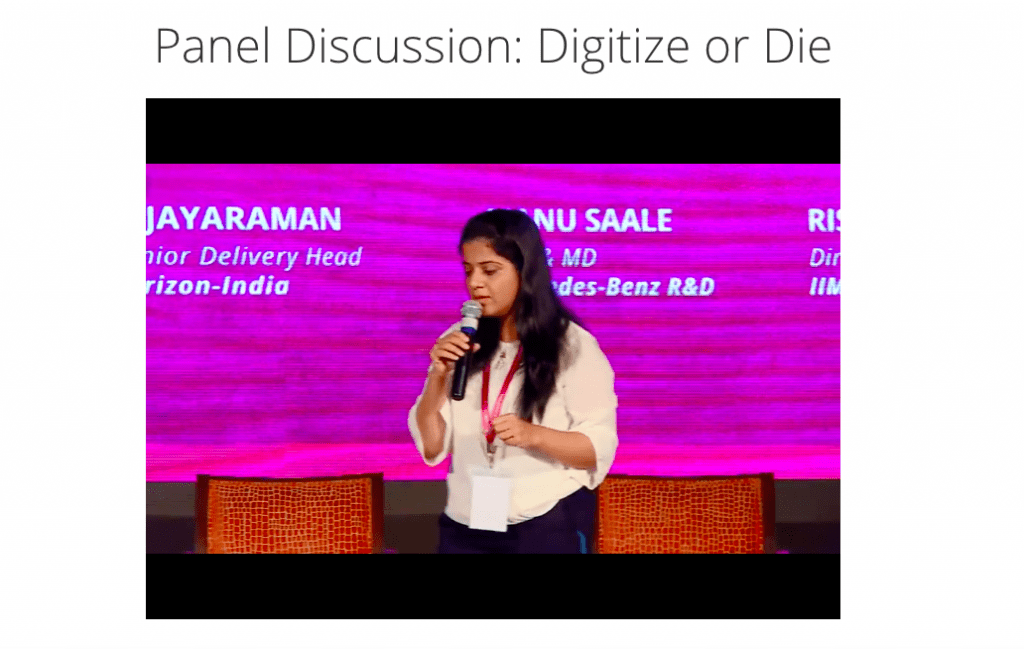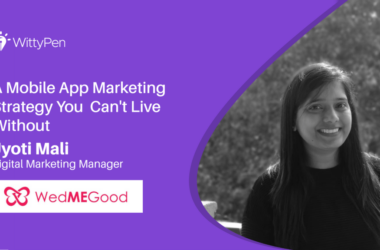Last updated on March 25th, 2021
We interviewed Smitha Hemmigae, who heads marketing at ThoughtWorks India to understand her perspective on content and the trends in content marketing.
Before going to the content marketing tips given by Smitha, here’s a little read about her and ThoughtWorks.
About Smitha
Smitha currently heads marketing at ThoughtWorks India. Prior to joining ThoughtWorks, she was the Sr. Director, Marketing at CSS Corp where she headed influencer relations (analyst and public relation), content and digital marketing. Apart from this, she’s also worked at Unisys Corporation, Logica and Infosys.
Smitha is a seasoned marketing professional who has the experience of working across various industries, and she brings relevant marketing experience in the Public Sector, Insurance, Healthcare and Life Sciences industries.
About ThoughtWorks
ThoughtWorks is a privately owned, global technology company with 42 offices in 15 countries. It provides software design and delivery, and pioneering tools and consulting services. The company is closely associated with the movement for agile software development and has contributed to a range of open source products.
What’s the true definition of content according to you?
For me, content is anything that is put together in words that helps solve the problems of your target audience and also helps in better branding. Content can be present online and offline – Forums, social media, white papers, case studies, brochures etc.
How important is content marketing according to you?
Content marketing is not just a buzzword, in fact, it is the go-to place for all brands. To sustain in the market today, adopting content marketing is critical. Marketing as a whole has many components – PR, Webinars, offline events etc. And all of these components have an underlying layer – content.
You need to understand the pulse of your audience and solve their problems through the content you create. And while you present your content – you must craft it into a story- because we as humans love compelling stories.
Content is the key differentiator between brands because all other things that your brand does and stand for can be replicated. To beat the competition, you must produce unique content.
Is content curation important?
Original content any day grabs more eyeballs. It will eventually help you achieve your final goals- sales, conversions, traffic etc. But having said that, even curation is important and there’s a way to go about it. For example, you can create whitepapers around stories that trend with your perspective added to it. A topic like “how to do content marketing when the budget is low” is not a new one – but we can add some of our techniques to it.
What are your core priorities in terms of content?
Priority number one is to repurpose content in every format that gets consumed. For example- we can convert a lengthy whitepaper into a quick blog, interactive infographic or a social snippet. This would ensure higher traffic, more brand visibility and eventually more conversions for the brand.
Priority number two is to create content that is tailored to a specific audience. For different audiences, our content needs to be different depending on their needs and requirements. A content piece meant for a CIO will be visibly different from that of a CFO. So the need here is to create persona-based content.
The third priority is to create content that’s conversational – content that involves the users to take action and participate.
How do you create a buyer persona?
We reach out to the customers, and also take customer surveys to understand their current pain points and larger requirements. We also rely on analyst firms like Nelson Hall to supplement our research.
What are the best content marketing strategies according to you?
There are certain strategies that we follow for our brand, and they are:-
- Our process starts by building a target persona, and accordingly, we figure out how we can create content that provides value to this persona.
- We dedicate ample amount of time to blogging. We have about 110 books in 20 years and hundreds of thought-leadership papers that are read and shared extensively. The information that we put up is in-depth, exhaustive and is shared with everyone. We believe that the more you share, the more you learn and the better you collaborate.
- Thirdly we also try to focus on how our content can enable sales. Prospective clients always evaluate your expertise in the subject matter and would want to see similar case studies. So, we believe that it is important to create content that is well-researched, in-depth and has a competitive edge.
- We understand the importance of consistency in content creation and distribution and hence we follow that. Consistency can help build a brand’s value in the longer run.
- For us the measurement of output is critical. And it needn’t just be views, clicks and likes. The metrics are much deeper. For example, we focus on how many times have we been able to repurpose content or how big of an influencer network were we able to create or how many times are we being talked about in forums.
How frequently should you be creating content?
Ideally, 20 pieces of relevant good quality content should be produced in a year. You do not need to create thousands of pieces of irrelevant content. If you do 20 and repurpose each of them 5 times – you easily get about 100 pieces of valuable content. And these pieces should be thoroughly promoted on different channels.
What is more important – Evergreen or Viral Content?
It’s a combination of both. Let me give you an example. Last year we participated in Nasscom Global Conclave, and we wrote a paper on a framework that would allow the GIC’s (Global in-house centres) to transform from shared services centres to innovation centres. This was shared with about 1500-2000 people. At the same time, we were also doing a workshop, where we gave out brochures with the QR code that redirected back them to this paper. We also did PR mentions, emailers – that all again redirected the audience to the same white paper. It garnered a lot of visibility and readership and became viral.
The paper was so relevant to the GIC’s that they took a hard copy of it whenever they had client meetings. Although the whitepaper was created for an event with the purpose of creating virality, it ultimately turned into an evergreen content piece.
Why do some companies fail to do well in content marketing?
Well, many marketing companies might be successful in creating good content, but they often fail at promoting it well. So, the ideal advice to them is to use a combination of online marketing strategies such as SEO, SMM, SEM to promote and distribute content well and have better search engine ranking.
Is it important for a company to have brand guidelines?
Content should be similar in terms of tonality and brand language -It could be either conversational or formal. Not only the types of content, but even the visuals need to have consistency. Your audience should be able to identify your brand through its tone, font and colours.
Are there any campaigns that did well and you want to share with us?
Yes, there are two that I would want to talk about. The first one was “Talk Tech To Her”. This was an initiative aimed at getting the women back who took a career break to re-enter workspaces. This was not just about incentivising them and having policies and leaves in place. This was about promising them something intangible – The aim was to make sure that their voices are heard and they don’t feel differentiated.
We promoted this event through PR, Hackathons, Webinars, blogs and social media. This helped us in getting a lot of awareness and made this whole initiative a big success.
The second initiative was “Thoughtworks Live India 2017”.
The theme of the event was how successful businesses of the future are always going to be led by courageous executives who embrace digital at their core and help their organisations adapt to change, calibrate and stay nimble.
There were 6 whitepapers written for the event – and they have been the most engaging content pieces that we have sent to the market so far. They have been used in media, newspapers and have also been repurposed by us in blogs and social snippets.
Are there any content marketing tips that you would want to give to the marketers of today?
Yes, there are some content marketing tips that marketers should take a note of.
- You must create a robust content marketing plan in line with what your market wants
- Consistency is very important in the creation of content – because there are many players in the market wooing the same audience with similar products.
- Be a storyteller and cater to the emotions of your audience. You need to be empathetic and take people through various emotions while you create content.
- You need to keep its simple- avoid using lots of jargons and flowery language – it might distract your user from what you are essentially trying to say.
Conclusion
With this, we have come to the end of our interview with Smitha. We thank her from the bottom of our heart for taking out the time to answer our questions and giving some valuable content marketing tips.











